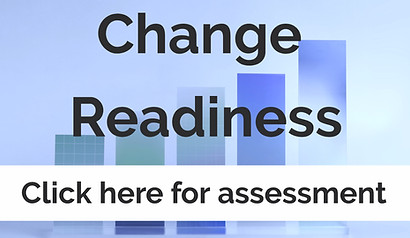Templates
We provide helpful templates in most of our courses, and you can find some of our most popular here! Our sample templates are continually changing, so come back often to see other templates to help your projects thrive!
.jpg)
Are You Ready for Change?
A change readiness assessment (CRA) is an invaluable tool to help you determine whether you, individual employees, or your company as a whole is ready for change! When the assessment is analyzed, you can determine risks and potential obstacles and develop strategies to address areas of need. Just like with personality assessments, it is important to know this information about ourselves, our team, and even our stakeholders.
Champion change for the organization: Getting the people part right is one of the most important factors affecting successful change. Organizations must provide a business model that encourages and enables continuous change. Organizations tend to focus on the implementation of systems and processes and not on the overall impact. The CRA doesn’t just help you assess other individuals, it helps them understand how they feel about change. This empowers employees to take steps themselves to come to terms with changes.
Identify possible challenges: Since change deals with people and emotions, it can be difficult to initiate a new system or process in an organization. With the CRA, you can get ahead of who your resisters may be, and help them understand and become a champion for the change, instead of a detractor.
Know when change needs to wait: The CRA does not just show who may be resistant to a change, it aids in analyzing if the organization is ready for a change. While some people may be resistant to any change, if much of your organization shows they are not ready, you need to reevaluate. If you try to force a change that is widely unwelcome, it will most likely fail. Maybe the change was not properly communicated. Maybe the company has just been through an upheaval and needs to adjust to the new normal. There can be many reasons why an organization is not ready for a change, and the CRA improves your chances for implementing at the right time.
We highly encourage you to take the change readiness assessment yourself and distribute to others in your organization to see if you are ready for that next big change. Select the number beside each statement that reflects how accurately the statement describes you in regard to the particular change initiative. 1=not like me all the way to 6=exactly like me. The sheet will total your scores automatically to reveal how ready for change you are, as well as if you may be a little too optimistic or overconfident about change. The desired result would be an even balance between the different categories. Remember, individuals change readiness fluctuates for numerous reasons, so use the assessment as often as you feel necessary.
We provide helpful templates in most of our courses, and this is one of the most popular. Click here to download your own copy of the change readiness assessment (CRA). Come back often to see other templates to help your projects thrive!
